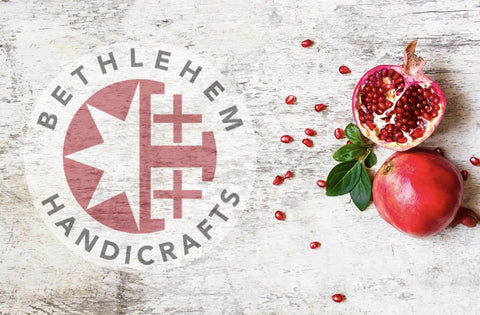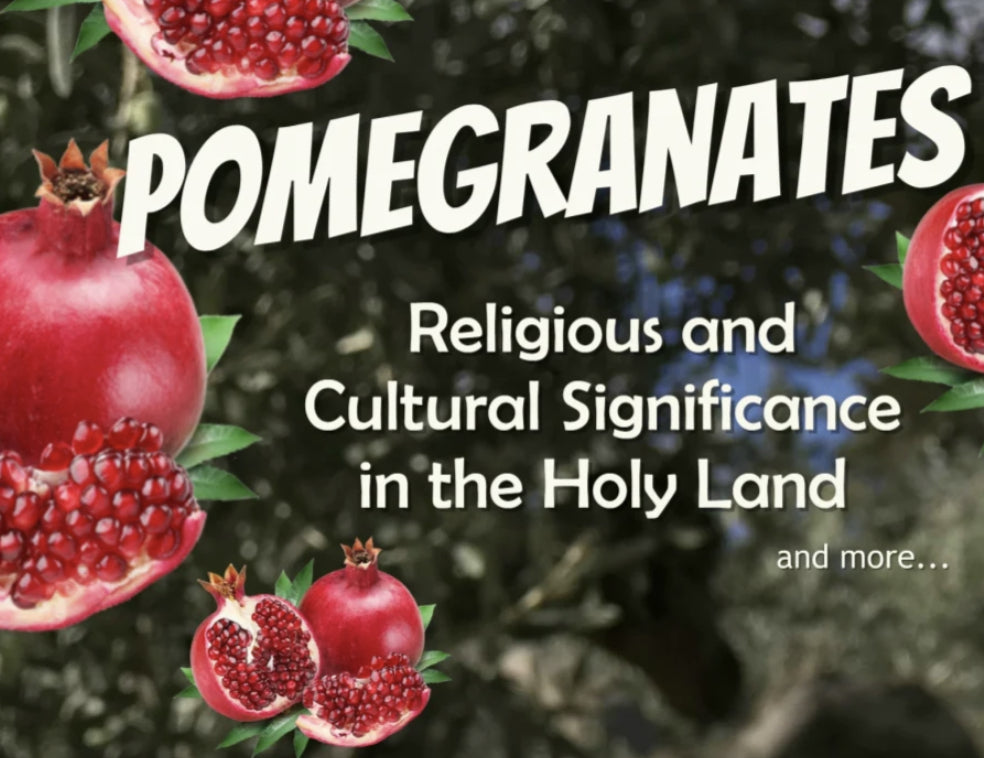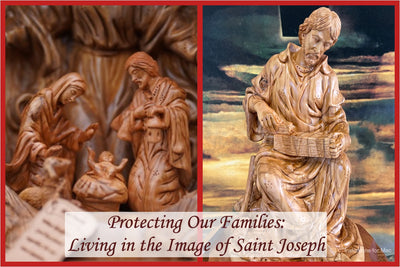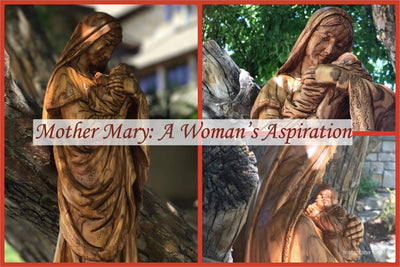Background
The tasty red pomegranate has long been a staple of Holy Land diet and cuisine. The common Punica granatum is a deciduous tree that originated from Persia and has spread across the world; principally to warm, dry climates.
As with olive trees, the pomegranate tree can live for substantial periods of time, with certain specimens reaching nearly 200 years of age in ideal conditions.

The first pomegranates usually begin their annual return to the vendor stalls of fruit markets in the late summer, and give fruit through all but the final days of winter. Their comparatively long shelf life and tough peel make them ideal for transportation and storage.
Their orange-like shape with rough, sometimes spikey petals resembled the first hand-held bombs used by Europeans, which gave rise to the word granade - or in English, grenade!
Uses and Benefits
Rich in vitamins, micronutrients and fibers, the pomegranate is an exceptionally healthy fruit for human consumption. In the Holy Land, it is a popular squeezed juice, salad ingredient, side dish and dessert fruit all at once, along with a molasses and vinegar. The pomegranate has also been a staple ingredient in traditional medicine and home remedies since the early ages of civilization. While it takes some practice and patience to carve out and clean the fruit away from the bitter husk, and its red juice can make quite the stain on linens, those who persevere in the task are deliciously rewarded.
Religious and Cultural Significance
The pomegranate enjoys universal popularity in the Holy Land, and is rich in religious symbolism and cultural significance.
- The ancient Greeks believed it was three pomegranate seeds that cursed Persephone to the Underworld, causing the notoriously bitter Mediterranean winter each year.
- In some Abrahamic legends, it was a pomegranate tree that was the Forbidden Fruit in the Garden of Eden that made Adam and Eve fall from innocence.
- The Jewish people traditionally eat pomegranates on the feast of Rosh Hashana due to its symbolism of fruitfulness, while some sects quite literally consider it a sacred fruit.
- The Armenian association with the pomegranate is equally strong. Considered the national symbol of Armenia, the Armenian community of the Holy Land is no exception when it comes to cultural connections to the fruit, which is also identified as the symbol of marriage and fertility. The innumerable ceramic shops of the Armenian Quarter of Jerusalem are rife with ceramic crockery, decorative plates and tiles decorated with images of pomegranates, along with life-sized sculptures of the fruit.

- As with Judaism, the Christian faith also recognizes the symbolic sanctity of the pomegranate. The act of opening up the rough peel and harvesting the sweet seeds has been referred to as a metaphor of the Passion of Christ, wherein the act of suffering reveals an abundant treasure from within.
- In the Christian village of Taybeh in the West Bank, the pomegranate, also known by its Arabic name Roman, has a special significance as the village icon of the Virgin Mary depicts the Christ-child holding a pomegranate. As pomegranates are also held to be a source of fertility, the icon can be considered to have multiple meanings.
- The pomegranate seed is also used in Christian burial and memorial rites, when a special wheat-based dish known as koliva is prepared with pomegranate seeds as an edible, decorative and symbolic component (being prominently placed on top of the dish, and again representing the renewal and continuation of life as through the Passion of Christ). The koliva is brought by mourning families to funerals and memorial services, to be shared in gratitude with those who have come to pay their respects.
- For all peoples of the Holy Land, the pomegranate is also a reminder of the abundance of the land, even during the cold winter months.
While those in northern climates may find it harder to locate a fresh pomegranate, do not pass on the opportunity to sample a Holy Land pomegranate while on pilgrimage, as a fruit, drink, main course or dessert. You won’t be disappointed!
We, the Bethlehem Handicrafts’ team, are so proud to put the Holy Land in your hand by giving you a variety of the best and the most outstanding original Bethlehem’s olive wood carvings with the best quality made in the Holy Land.








